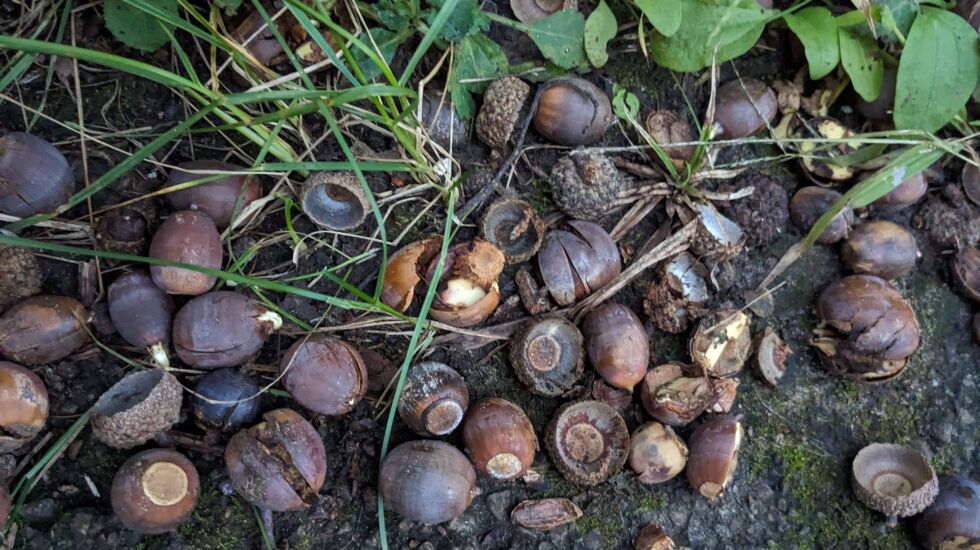
It sounded like it was raining acorns Wednesday while I photographed mast.
It’s been a good mast year.
Every year before archery deer hunting opens—the season opens Sunday—I check on mast production.
This year I got pulled into, yes, the nuts and bolts of mast, which is the fruit, nuts and seeds of woody plants.
“Yes, my observations as well lead to good mast production this year but it seems many acorns are small,” Illinois State Forester Tom Gargrave agreed.
He recommended district forester Jim Tresouthick.
“It is pretty good year [for mast]; last year and the year prior, black and red oaks were not producing,” he said. “Generally, there is an ebb and flow. If you look at historic migrating tribes in the region, they would move from mast producing areas year to year.”
Considering the early summer drought, the good mast year seems surprising.
“I was expecting nut production to be hurt by that, but in reality it looks like a good year across the board,” Tresouthick said.
For a Downstate perspective, Chris Evans, forester for the Illinois Extension, emailed, “In east-central Illinois, white oak mast seems to be incredible this year with abundance of acorns that are starting to drop heavily already. The red oaks in that region also seem to have abundant acorns but drop has not started yet.
“In southern Illinois, it is still to be determined, but appears to be a decent, but not great year for white oak acorns. Some acorns are dropping now but it seems it hasn’t started in earnest yet. Red oaks acorns seem to be fairing a bit better but have not started dropping yet.”
Considering the range of climate across Illinois, it was not surprising to find a range of nut-producing trees statewide.
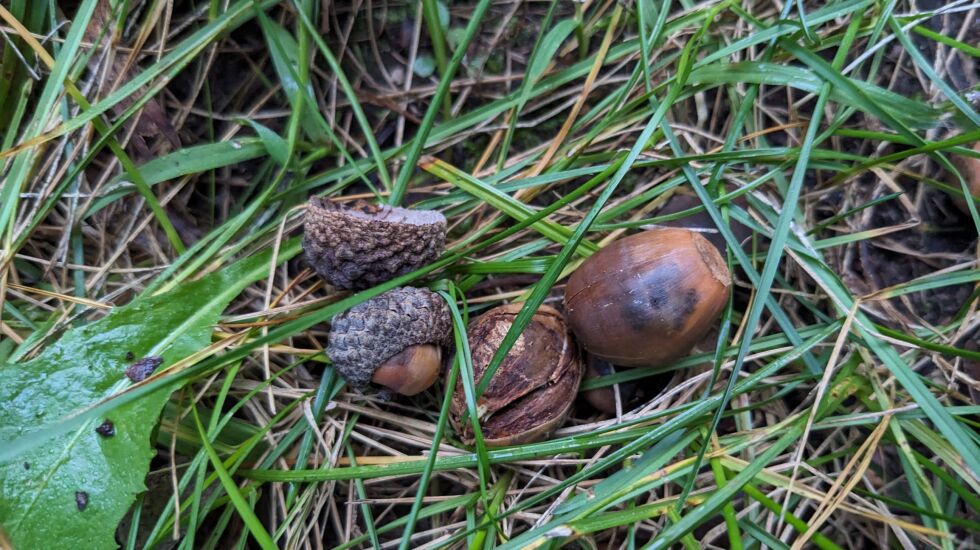
“Oak, hickory and walnut are the big ones in our neck of the woods,” Tresouthick said. “Other areas like hazelnuts, but those are the big ones here.”
Dan Skinner, forest wildlife program manager for the Illinois Department of Natural Resources, gave a broader statewide perspective.
“Much of the dietary preferences of white-tailed deer in Illinois will depend on the surrounding habitat type,” he emailed. “Fall deer diets in areas of intensely farmed row-crop agriculture may be comprised of nearly 50% farm crops. Grass and forbs in the fall usually make up a small percentage of their diet; the other large part of their diet in the fall is often fruit, nuts, and seeds. In this latter category, acorns and crabapples can make up a large part of this group of foods.
“In the southern 2/3 of the state, persimmons can be an important food source, and deer may also seek out beech nuts in the eastern and southern parts of Illinois.
“When looking at acorns alone, white oaks are probably the number one preferred food source. These acorns have high fat and carbohydrate content, but are lower in tannins which can make the acorns less palatable for deer. Deer will also consume acorns from other species, but generally as the acorns become larger, or have higher tannin content, such as red oaks or bur oaks, they become less favorable to deer.”
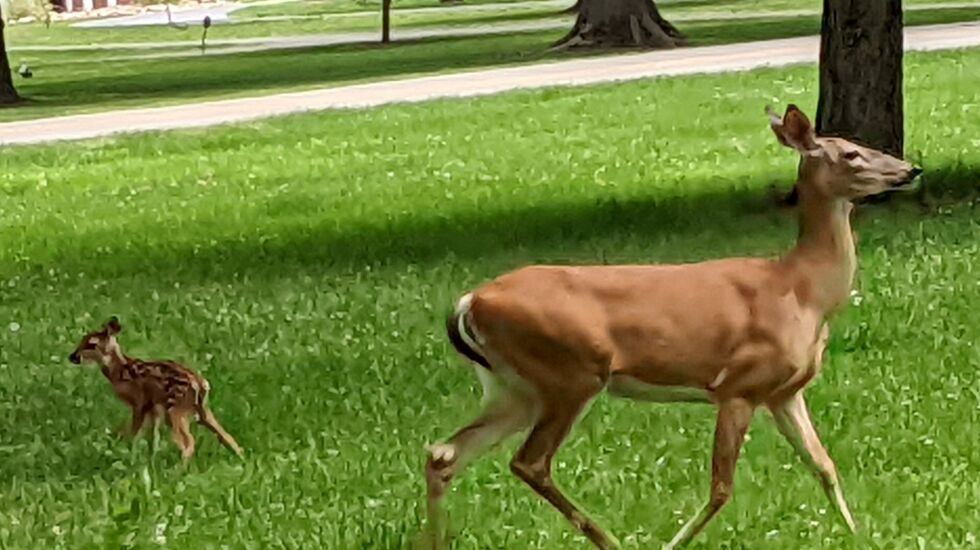
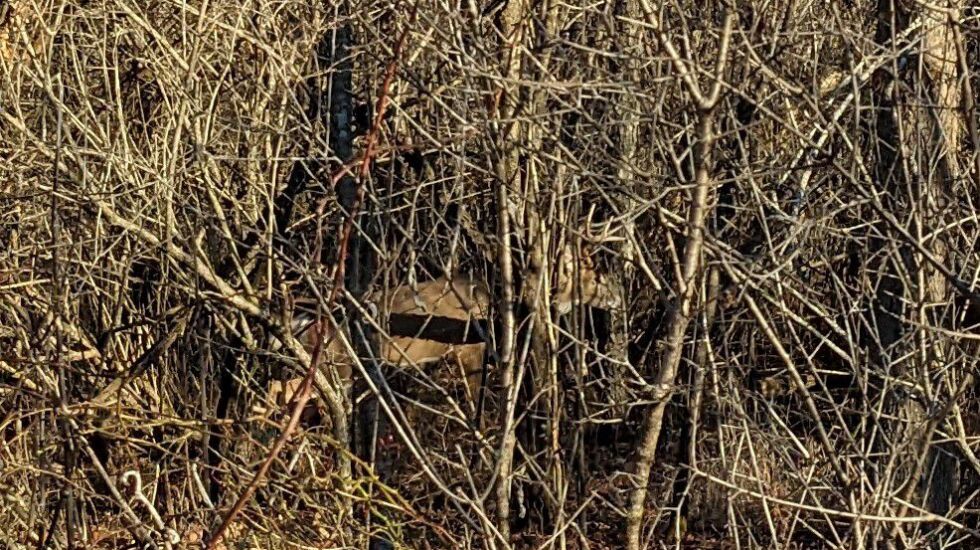
Obviously, deer are not the only animal eating nuts.
“Squirrel, turkey, quail, deer, and you’ll see other critters that will partake in consuming of mast,” Tresouthick said. “I am sure opossum, though I’ve never seen them do it, but they are grazers.”
When I asked if a good mast year impacts animal populations, he said, “Generally after a good year, the following year in the spring, you’ll see a marginal uptick in population. Then there is a drop-off. That is my experience, but I don’t have hard evidence. There is always this ebb and flow in nature.”
* * *
Archery deer notes
Some notes before the opening of archery deer season on Sunday in Illinois.
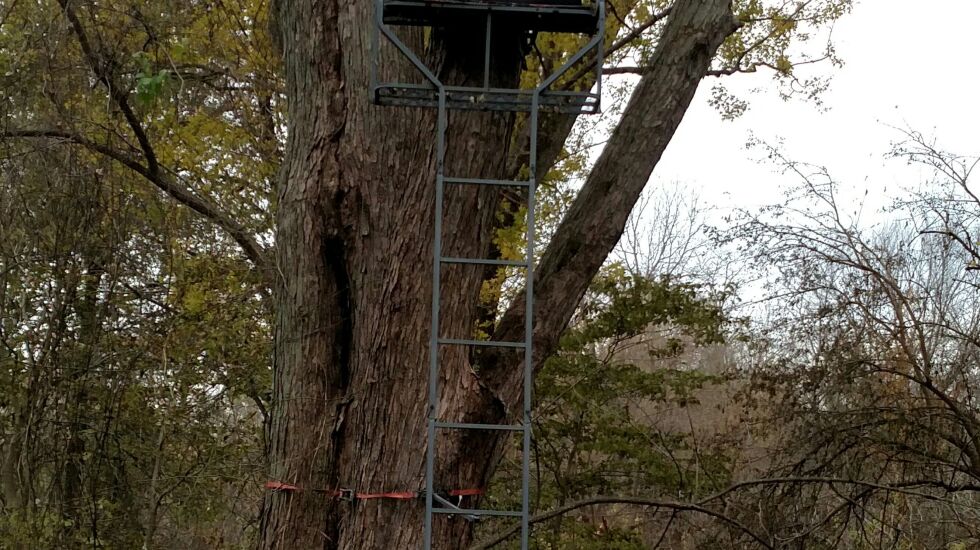
- Regulations, including reporting ones, are the same as last season.
- With drought in some areas, I asked Dan Skinner, forest wildlife program manager for the Illinois Department of Natural Resources, about EHD outbreaks. He replied, “To date, we have received very few reports of suspected hemorrhagic disease mortality in 2023; our biologists have received calls reporting dead deer in approximately seven counties in central, southern and western Illinois.”
- During the 2022-23 season, crossbows accounted for approximately 53.4% of archery harvest.
- The Illinois Crop Progress and Condition Report listed corn harvest statewide at 10% by Sunday; soybean harvest was at 6%.







